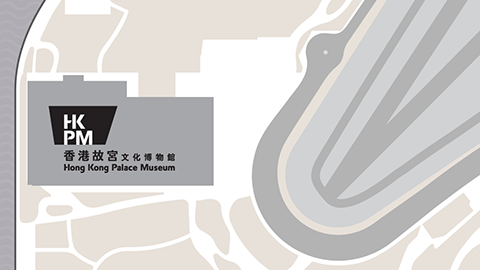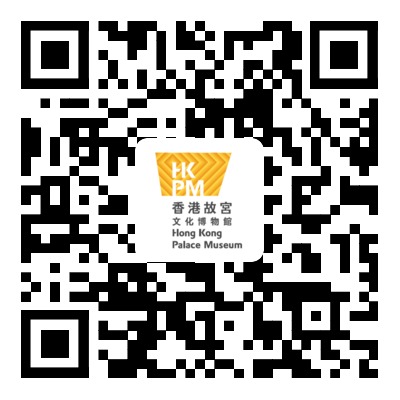Visitors will enjoy a multi-course feast spanning 5,000 years of Chinese history across time and culture
The Hong Kong Palace Museum (HKPM or the Museum) is pleased to present a new special exhibition, “A Movable Feast: The Culture of Food and Drink in China” (“A Movable Feast”), from 19 March to 18 June 2025. As a highlight of “Art March Hong Kong 2025”, this exhibition presents more than 110 exquisite artworks, including eight grade-one national treasures from The Palace Museum, to delve into the rich culinary culture and lifestyle of ancient Chinese people through the evolution of food vessels, eating practices, and traditions. Jointly organised by the HKPM and The Palace Museum, “A Movable Feast” showcases the prestigious collections of the two museums, along with important loans from renowned museums such as the British Museum, the Asian Art Museum of San Francisco, the Cleveland Museum of Art, and several museums in Hong Kong. The exhibition uses multimedia and new technologies to present a fascinating history of Chinese culinary culture from the Neolithic period (about 10000–2000 BCE) to the Qing dynasty (1644–1911).
A new perspective on food culture in China: “Mobility” across life and afterlife, cultures, mountains and lakes, and time
Food culture in China is abundant and profound, encompassing diverse topics ranging from the colours, aromas, and flavours of the dishes on the dining table to the customs, etiquette, and philosophy related to eating and drinking. “A Movable Feast” adopts a fresh perspective centred on the concept of “mobility” to highlight and connect significant aspects of food culture throughout 5,000 years of Chinese history. The first three sections of the exhibition are “Crossing from Life to Death”, “Crossing Cultures” and “Crossing Mountains and Lakes”, exploring the “movement” of food and vessels across spiritual, cultural, and physical spaces. The final section, “Crossing Time”, features multimedia dining tables that invite visitors to discover the relationship between heritage and modern life in China’s long-standing food culture and contemporary vessels.
The first section: “Crossing from Life to Death – Feeding the Spirits” features food and drink vessels used in rituals and burials dating from the Neolithic period to the Han dynasty(206 BCE–220 CE). This section demonstrates the importance of “transferring” food and drinkfrom this world to the afterlife in Chinese beliefs. Key objects on display include the wine vessel (zun) for Father Ding and drinking vessel (jue) of the Marquis of Lu from The Palace Museum’s collection, dating from the Western Zhou dynasty (about 1100–771 BCE). These bronze ritual vessels were used for making offerings, and served as a medium between people and spirits, demonstrating the important ritual functions of eating and drinking in China. During the mid- to late Western Han dynasty (206 BCE–8 CE), earthenware burial objects in the shape of granaries, wells, stoves, pigsties, and chicken coops were prevalent, not only mirroring theway of life and the flourishing food culture of the time but also signifying people’s desire for an abundant afterlife.
The second section: “Crossing Cultures – Nomadic Eating Practices” presents the exchange of food culture between China and Central and West Asia during the Tang (618–907) and Song (960–1279) dynasties. Furthermore, it explores the intersection and integration of Chinese and global culinary customs, illustrating how the notion of “tradition” evolves through cultural exchange and movement of people, objects, and ideas. The introduction of new ingredients, utensils, and taller furniture to the Central Plains via the Silk Routes significantly transformed the region’s food culture, an impact that endures to this day. For example, the tables and chairs introduced by nomadic peoples changed the traditional Chinese dining habit of sitting on a mat on the ground to more communal dining. Foods from Central Asia were given the prefix hu (roughly translated as “foreign”), such as hujiao (black pepper), hutao (walnuts), and huma (sesame), which remain widely used today. A phoenix-head ewer with a handle and spout exemplifies how nomadic drinking customs of pouring wine from pitchers replaced the tradition of spooning wine from a jar with a ladle. Additionally, a footed platter demonstrates the emergence of large platters during the Tang dynasty. These platters were designed to accommodate newly introduced nomadic foods such as hubing (foreign flatbread), fruits, and a shaved ice-like dessert called sushan, demonstrating the rise of communal dining as a mainstream practice during that period.
The third section: “Crossing Mountains and Lakes – Packing the Perfect Picnic” explores the popularity of excursions during the Ming (1368–1644) and Qing dynasties and focuses on the paraphernalia used for outings. This section shows the mobility of food and drink across different landscapes by presenting artworks and picnic sets of the time. In particular, it illustrates how the Qing court gradually turned boxes originally used for outings into organisers for storing objects accumulated at the palaces. Historically famous excursions and picnics have become a source of inspiration for numerous calligraphies, paintings, and other works of art. For example, A Night Banquet at the Peach and Plum Garden by the renowned Qing court painter, Ding Guanpeng (active 1726–1770), depicts the famed Tang poet Li Bai (701–762) and his cousins enjoying a banquet under blooming peach and plum trees. During the Ming and Qing dynasties, dining on pleasure boats was a popular activity along the lower reaches of the Yangtze River. Celestial Boat on Winding River, drawn by the famous Ming dynasty landscape painter, Zhang Fu (1546–1631 or after), vividly depicts a leisurely outing on the water, reflecting the joy of gathering and banqueting during that time.
The fourth section: “Crossing Time – The Heritage” showcases the legacy and evolution of Chinese culinary culture in an engaging and innovative way. Today, Chinese culinary culture not only inherits traditional wisdom, but also embraces contemporary ideas and advancements in technology. Through multimedia installations, visitors are invited to engage in a virtual feast that transcends time through ordering food in a virtual restaurant setting, exploring the evolution and purpose of dining utensils, and discovering the diverse cooking techniquesassociated with these utensils.
In conjunction with “A Movable Feast”, the Museum will offer a variety of new educational programmes and resources, including public talks, special workshops on picnic box-making, and a learning resource booklet. Further details will be announced in due course.
“A Movable Feast” will open to the public from 19 March to 18 June 2025 in Gallery 8 of the HKPM. Tickets for this special exhibition are priced at HK$150 for adults and HK$75 for concessions*. Holders of a Full Access Ticket, priced at HK$220 for adults and HK$110 for concessions*, can also access the special exhibition, “The Forbidden City and The Palace of Versailles: China-France Cultural Encounters in the Seventeenth and Eighteenth Centuries” in Gallery 9, as well as other thematic exhibitions (Galleries 1 to 7) on the same day. Tickets are available for sale or reservation through the West Kowloon Cultural District’s online ticketing platforms and ticketing partners. Please refer to the HKPM website for more information.
*Concessions are available to children aged 7 to 11, full-time students, seniors aged 60 and above, persons with disabilities (with one companion), and CSSA recipients.
Remarks
About the Hong Kong Palace Museum
Through innovative curatorial approaches, the Hong Kong Palace Museum presents priceless treasures from The Palace Museum along with the finest collections from other world�renowned institutions. The Museum is also in the process of building its own world-class collection. Opened in 2022, the Museum is a leading institution for the study and appreciation of Chinese art and culture and the promotion of dialogue among world civilisations. The Museum is a collaborative project between the West Kowloon Cultural District Authority and The Palace Museum. The Hong Kong Jockey Club Charities Trust donated HK$3.5 billion to fund the construction of the museum and part of its annual exhibitions and educational programmes from 2023 to 2031.
Through research, exhibitions, publications, and educational and professional exchange programmes, the Museum builds international partnerships and positions Hong Kong as a global hub for art and culture. A resource that belongs to the local community, the Museum inspires community engagement, fosters dialogue, and promotes creativity and interdisciplinary collaboration.
About The Palace Museum
Established in 1925, The Palace Museum is a broadly representative national museum. It is housed on the grounds of the palace of the Ming and Qing dynasties known as the Forbidden City and its collection is based on Ming and Qing imperial collections. In 1961, the State Council named it a Nationally Protected Key Cultural Heritage Site, and in 1987 it was designated a World Heritage Site by UNESCO. The Palace Museum became a national 5A tourist attraction in 2007. The following year, it was among the first Chinese museums recognized by the National Cultural Heritage Administration as a first-grade museum. Covering over one million square metres, the architectural compound under The Palace Museum’s administration consists of around 9,000 bays (internal spaces defined by columns) of Ming and Qing era structures, making it the world’s largest and best-preserved historical palatial complex.
Today, The Palace Museum is an unparalleled art treasure house with a vast collection of over 1.86 million pieces in twenty-five major categories. It showcases the time-honoured and splendid Chinese civilisation to the public through its imperial palace architecture; the display of original interior settings to illustrate the history of the imperial court; galleries dedicated to decorative arts, timepieces, paintings, calligraphic works, ceramics, and sculptures; and thematic exhibitions.
About the West Kowloon Cultural District (WestK)
WestK is one of the largest and most ambitious cultural hubs in the world and Hong Kong’s new cultural tourism landmark, spanning 40 hectares alongside Victoria Harbour. WestK comprises a mix of landmark arts and cultural facilities, including world-class museums M+ and the Hong Kong Palace Museum, intricately designed performing arts venues the Xiqu Centre and Freespace, the 11-hectare Art Park with a waterfront promenade, and the upcoming WestK Performing Arts Centre.
Hosting over 1,000 exhibitions, performances, programmes, and events each year, WestK provides a vital platform for both emerging and established artists. WestK welcomes more than 10 million visitors each year, evolving as the international cultural brand of Hong Kong and strengthening the city’s strategic role as an East-meets-West centre for international cultural exchange.
https://www.westk.hk








